Click below to watch the video
The ancient records tell us that the city of Mecca was located in the Paran wilderness.So where was Paran? Dan Gibson examines ancient manuscripts to set the record straight.
Transcript
The ancient records tell us that the city of Mecca was located in the Paran wilderness.So where was Paran? Dan Gibson examines ancient manuscripts to set the record straight.
Hello, I am Dan Gibson and welcome to another video in the series ‘Archeology and Islam’.In this video we will address the question: Where was ancient Paran?
We are going to look at a variety of different sources of information. We will start with how Paran is mentioned in the Biblical and Christian accounts and end with Islamic accounts. In all of this, we will ask ourselves the question: ‘When ancient records speak of Paran, what area do they have in mind?’
Some people may react at this point, and respond that this is stupid, because Paran = Sinai. And while I agree that the name Sinai often appears along side of Paran, after examining the sources I think they are two separate places.
Others will tell you that Paran is in Saudi Arabia, and is the area around Mecca. And others will place it in northern Sinai. If you check maps on the Internet, you will see the name Paran shoved around here and there.So in order that we are not fooled or misled by what people are saying about Paran, let’s review what the ancients said about this place.
So let’s start with a map. Let’s place Egypt and Edom on the map. These we can nail down, even though borders do move around from time to time.
The southern border of Edom has always been fixed. It is a large expansive escarpment that drops several thousand feet from the high desert to the lower desert below… and it runs from east to west making it a very distinctive border.
Ancient forts and defensive structures dot the top of this escarpment. Above the escarpment there are fields, moisture, and villages. Below the escarpment there is desert, rocks and sand dunes. For several years I lived with my wife and children near the top of the escarpment. My children played along the edge of the escarpment with the hot desert just below them. It was always 5-6 degrees cooler at the top of the escarpment.
The ancient kingdom of Edom was at the top of the escarpment, and the land of Edom extended north, back into the mountains. Chief among these mountains was Mount Seir where the city of Petra was eventually located.
Along the western side of the mountains we have Wadi Arabah which is very similar to the lower deserts. The mountains of Sinai and Negev are to the west.
Now the problem we have with these places is that there are no ancient sign posts or inscriptions in stone that tell us: “This is Sinai” or “Now entering Paran.” So we need to understand where these locations were, from the ancient accounts.
For thousands of years we have understood that the peninsula between Egypt and the Middle East is known as the Sinai Peninsula. But now in the 21st century a few people are promoting the idea that the Exodus was from Egypt into Saudi Arabia. Some have suggested that perhaps the desert in Saudi was the original Sinai. But as you will see, it doesn’t matter if you put Sinai on the right or the left, because Paran is associated Mount Seir and with the desert south of Edom below the escarpment.
So let’ start with Paran in the earliest Biblical records and move forwards.
The Biblical book of Number 10: 12-16 tells us: “And the children of Israel took their journey out of the wilderness of Sinai; and the cloud rested in the wilderness of Paran.” A few verses later:verse 16 “… the people removed from Hazeroth, and pitched in the wilderness of Paran.”
So without addressing where these are, we need to notice that Sinai and Paran are TWO DIFFERENT PLACES. The Children of Israel move out from the Sinai and to Paran.
So please remember, SINAI IS NOT PARAN.
But Sinai and Paran are close, they are related in some way, and could be described as ‘two wildernesses side by side.’ So something separated them, to make them two distinct wildernesses. This may help clear up a lot of misunderstanding, because I keep meeting people who believe that Sinai and Paran are names for the same place.
Next, let’s turn to two verses in Deuteronomy 33: 1&2 “*This is the blessing that Moses the man of God blessed the children of Israel before his death. And he said, “The LORD came from Sinai, and rose up from Seir unto them; he shined forth from Mount Paran, and he came with ten thousands of saints: from his right hand went a fiery law for them.”*
Now we have three terms. One is Sinai, One is Seir, and one is Mount Paran.

Paran
On our map let’s make note of Sinai. As far as I know, ancient Seir has always referred to the Edomite Mountains, especially the mountains where the city of Petra was later established. So on our map, let’s fix Seir over Petra.
And I am going to place Paran here on the map, so it is beside Sinai, and south of Seir. It really does not fit anywhere else and we can shove it around if need be.
From the verses we just read, we learn a bit more about Paran, because Moses refers to Mount Paran. And Moses should know, because twice he traveled extensively in that area, once herding the sheep of his father-in-law and once leading the Children of Israel.
So now we know that Paran is not just a wilderness, it also has mountains in it, and one that is notable as ‘Mount Paran.’
Now another interesting verse: Genesis 14:5&6 This is from way back in Genesis, during the time of Abraham, Paran is mentioned during the rebellion against Chedorlaomer. I spoke about him back in Video 16 of this series.He is now understood to beKudur-kuku-mal a king of Elam. Here in Genesis it says:
“in the fourteenth year came Chedorlaomer, and the kings that were with him, and smote …” and then it lists a bunch of kings and peoples, and ends with …. and the Horites in their mount Seir, unto El-Paran, which is by the wilderness.”
That would be this area between Mount Seir and the wilderness. That could be south or east.
So now we have Sinai on the west, Seir over here, and Paran in the lower center and east.We can always move Paran if we need to.
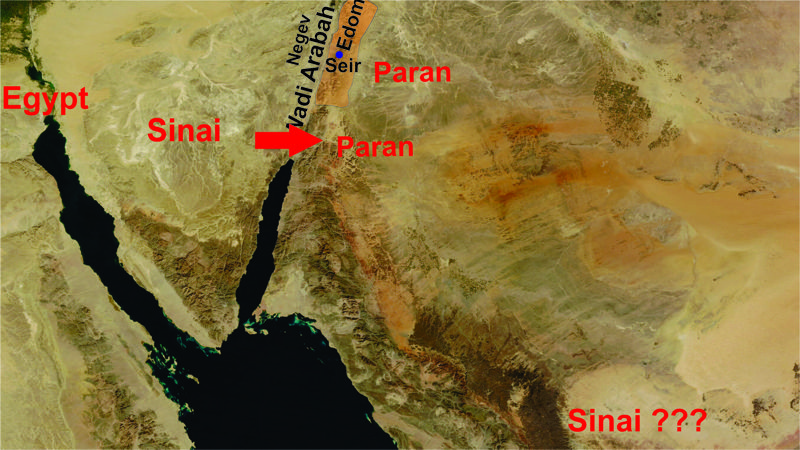
Paran and Sinai are two separate places
Now these are very ancient names that go far back into history. Paran comes from a very old root, that can mean “beautiful.” And indeed the deserts of Paran contain amazing beauty. Tourists come from all over the world to visit the wonders in Wadi Rum, which, according to this definition is in the wilderness of Paran.
Genesis 21:19-22 tells us that when Ishmael grew up he lived in the wilderness of Paran,and his mother Hagar got him a wife from the land of Egypt.
1 Kings 11:17-18 tells us that when Hadad the Edomite fled from Edom to Egypt, he passed through Paran on the way to Egypt.
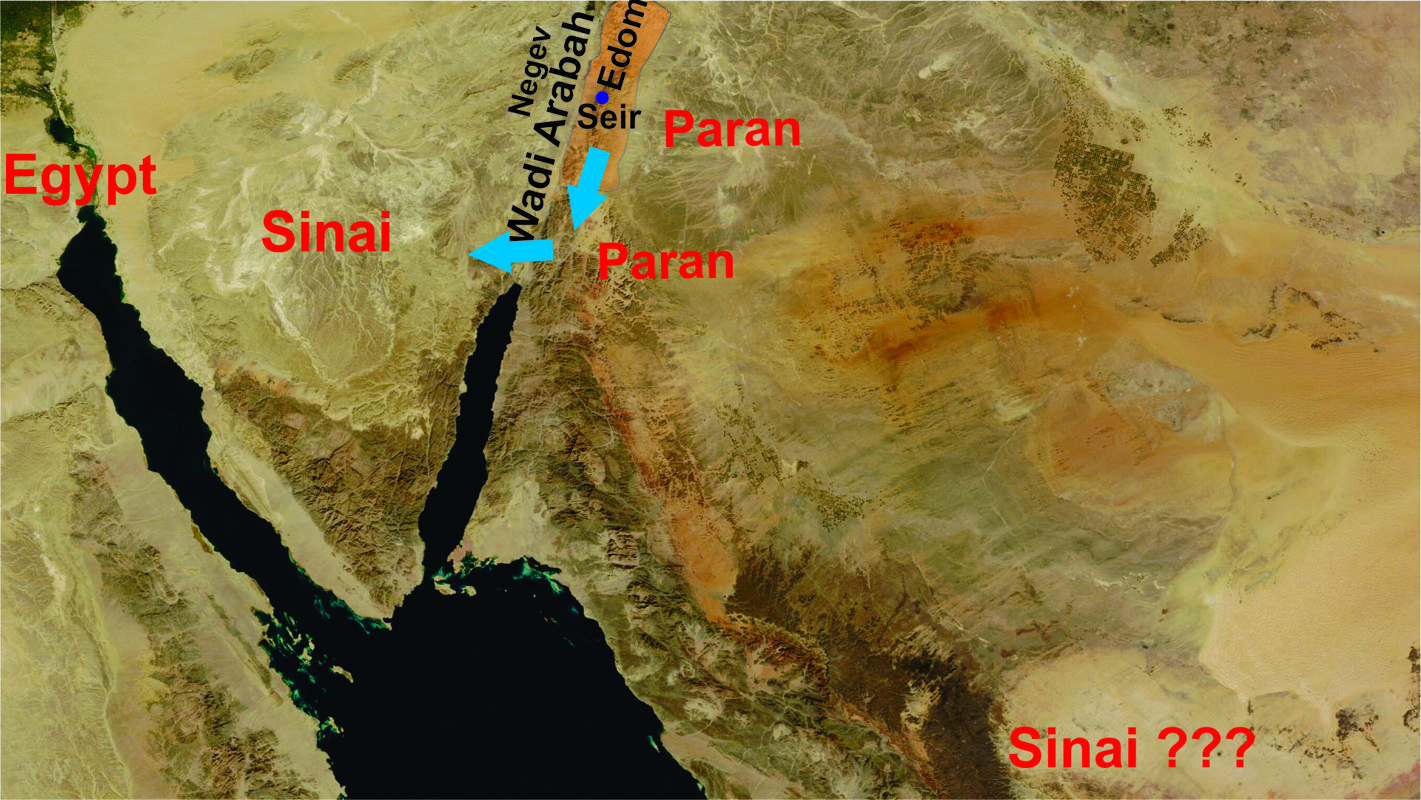
Route down the Kings Highway and west to Egypt
Now some early Christian writers mention Paran. Both Eusebius (in his Ono-mast-icon, a early Bible dictionary) and also Jerome reported that Paran was a desert in Arabia, and they call the city of Elat, ‘Eilat Pharan’ so here in the south we can anchor Paran to this area south of the escarpment.
The Book of Jubilee, written possibly around140 BC, or much earlier, tells us that Ishmael and his sons, and the sons of Keturah one of the wives of Abraham “:*“…went together and dwelt in Paran to the entering of Babylon in all the land which is towards the East, facing the desert. And these mingled with each other, and their name was called Arabs and Ishmaelite.”*Here the inference is that Paran also covers the desert east of Mount Seir all the way to Babylon. Since Mount Seir is the Petra Mountains, this book is telling us that Ishmael moved into the desert east of Petra, and occupied the whole area as far as the borders of Babylon. And this is what we find in Babylonian and Chaldean records. They ran into the Nabataeans, the tribe descended from Nabaioth the eldest son of Ishmael in the deserts just west and south of the Babylonian border, and also Qedarites, the tribe descended from Ishmael’s second son Qedar.
This places Paran in the area between Mount Seir and Mesopotamia.
So we can see that Paran is the wilderness to the east of Sinai, and that it warms around the southern border of Edom and extends out into the eastern desert.
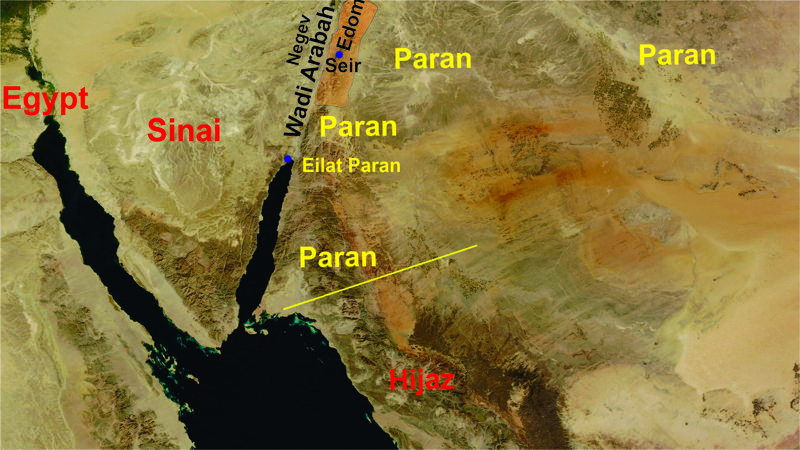
Paran is north of the Hejaz
We have specific mention of it south of Edom, including Eilat Pharan.’ It extends out into the area of Wadi Rum, and then out into the desert east of Edom.
Sebeos, the Armenian Bishop and historian, describing the Arab conquest during his time, wrote that the Arabs “assembled and came out from Paran”.
Today many Muslims point to Sebeos as proof that Muhammad is mentioned in non-Islamic history and that Muhammad really existed, but they usually fail to note that Sebeos places Muhammad and the founding of Islam in the area of Paran, not in Saudi.The only major city near Paran, was Mount Seir, known to the ‘Christian west’ as Petra. That name was given to the city by the Roman emperor Hadrian, who visited in 130 AD and from then on it was known as “Petra Hadriane” but most people simply canned it Petra. However, for centuries before this, and even long afterwards the city still had multiple other names, one of the best known was the ancient name of Rekem.And now Sebeos tells us that the Muslim armies started from here.
There is another Armenian writer, Thomas Artsruni, who, wrote before his death in 887 CE. I have spoken of him before in this series. Artsruni tells us: *At that time, in a place of Petrea Arabia Pharan, named Makka - The Mecca - he showed himself to bandits, warriors and band chiefs, worshiping in a temple…*”
Artsuni is very specific when he mentions a place:Arabia Petrea Pharan.Arabia Petrea was a Roman State. Paran specifies where in the Roman state.And then Artsruni says something truly amazing.The place is named Makka. ‘The Mecca’ he writes… being very specific. Here the writer clearly calls the place Mecca and places it in Paran in southern Jordan.
Listen carefully. Thomas Artsuni gives the location of Mecca as Petrea Arabia Pharan. These are the Christian names. They are places well known in the Christian Middle East. Bishops have come from this place to participate in major church consultations. Great theological debates that sometimes split the church, were influenced by Christian leaders in Petra. So he is not speaking of something nebulous, just … out there.
And then he tells us the Arabic name for this area is Makka, The Mecca. Why does he emphasize this? Because by the time of his writing, Petra, also known as Mecca, is abandoned, and the name Mecca has been transferred to a location in Saudi Arabia, and in his time, the only use for the name Mecca, was to refer to the city in existence is in Saudi. But Thomas Artsruni is early enough to remember that the city of Petra also had for one of its many names, MAKKA.The Mecca. The place where *Muhammad revealed himself to bandits, warriors and tribal chiefs, worshiping in a temple…which we know today as the Ka’ba.*
Please understand the importance of this. As we have said before: The city of Petra had multiple names. It was known as Seir, also Rekem, after an early king who lived there, it was also known as Petra, a Roman name, but to the polytheist Arabs: the city was known as Mecca.
And Thomas Artsuni says “The Mecca” just so you know for sure it’s the same thing, and it is in … Paran.That is why identifying the land of Paran is so important.
But today, many Muslims believe that Paran is the area around Mecca in Saudi Arabia, because they have been told that Mecca was in Paran. Which is true. We can see this from what we have learn so far.But for those who do not know where Paran has traditionally always bee, they conclude that Paran must be Saudi Arabia around the area of Mecca, regardless of where Paran has been all down through history.
Now, before we go any further, let’s listen to what the early Arabs say:
The Arab geographer Al-Muqaddasi mentioned that the Red Sea branches into two “at the northern extremity of al-Hijaz at a place called Faran”
So he places Paran (Faran) in a northern location. He says that here where the Red Sea divides into two is the northern border of the Hejaz. Paran is to the north, and Hejaz is to the south. This is the traditional understanding of Paran. This is an early Muslim geographer, not some Roman Christian.Paran is not in Sauid Arabia round the city of Mecca, but in the northern area. And Mecca is therefore in the north.

Southern border of Paran
Yaqut, the famous Muslim geographer writing around 600 years after the start of Islam tells us: *“Faran is an arabized Hebrew word, and it is one of the names of Mecca mentioned in the Torah.”*This is interesting.The name of Petra is not found in the Bible, there is it is Sier. The name Petra is not found in Islamic records. The name Petra is found in Roman records. It was specific to the visit of Hadrian to the region. But the name stuck in the Roman mind, but the rest of the world had other names for this city.
From the early Islamic records we learn that Paran is, broadly speaking, north of the Hejaz, stretching along the east side of the Red Sea up through Jordan and over to the Sinai. This is where Ishmael and some of the other descendants of Abraham settled. This is Paran.
Now when the old Arabic translation of the Samaritan Pentateuch was translated into English in 1851, in the old manuscript a footnote was found. “The name ‘Paran’ or ‘Faran’ refers to the wilderness and mountains near Mecca.
At this point, all everyone knew was that Mecca was in Saudi Arabia. No one had ever heard that Mecca might have been another name applied farther north.
Remember the Samaritan Penateuch goes back several centuries BC. But we do not know when this footnote was added, but it may be the earliest mention of Mecca that we have. Unfortunately we cannot date it. But we do know that these scribes only knew Paran as the desert south of and east of Edom. It was not until several hundred years into Islamic history that the name of Paran started being applied to the area of Mecca in Saudi Arabia.
So at the time of the writing of this footnote, it is most likely that Mecca in Saudi did not exist yet. As I have often said, there is no early archeological records of Mecca in Saudi Arabia, certainly not back into several centuries before Christ. There are no temples to Allat, or any of the deities mentioned by early Islamic writers. And on top of this, not a single surviving mosque from the first century of Islam faced Mecca in Saudi Arabia. Instead, all of the surviving mosques faced the region of Paran in southern Jordan.
Another early Islamic writer, Al-Hamdani writes in his book Geography of the Arabic Peninsula that the Paran mountains around Mecca were named after Paran son of Amalek.Azraqi also mentioned the Amalakites as associated with Mecca.
Now the history of the Amalakites is relatively well known but the Amalakites lived NORTH of Edom, never in Saudi Arabia. Eventually the Amalakites were wiped out. Listen,Mount Seir is given as the location where the remnant “of the Amalekites escaped to.”I Chronicles 4:42 & 43“And some of them, even of the sons of Simeon, five hundred men, went to Mount Seir, having for their captains Pelatiah, and Neariah, and Rephaiah, and Uzziel, the sons of Ishi. And they smote the rest of the Amalakites that were escaped, and dwelt there unto this day.”
So once the Amalakites were defeated in the north, some escaped south, as far as Mount Seir. They were living there until 500 men of the sons of Simeon came and attacked them.
So it is true that the remnant of the Amalakites lived in Mount Seir, the name of Petra before it was ever called Petra.And the Islamic records tell us that at one time there were Amalakites living in Mecca. Again, the ancient name Mecca and the more modern name of Petra applies to the same place.
Another interesting detail:Al-Sam’ni in his Book of Surnames tells us that the surname Farani is derived from the Faran or Paran mountains near Mecca.Again, Paran and Mecca are associated together.
In another instance, Wahb ibn Munabbih, who died around 730 CE, writes a book Kitab al-Tijan, which is a compilation of Pre-Islamic Arabic folklore. He mentions that there was a Tal Faran or ‘Mountian of Faran’ on the outskirts of Mecca.This may give us a clue as to how the name Mecca applied to Petra. It may have applied only to a specific mountain or group of mountains in the Petra region.
In another instance, Ibn Muna-bbih suggested that the name for Tal Faran as the ‘mound of the Two runaways’, was a place where the Jurhum tribe found Hagar and Ishmael and thought of them as two runaways. We have already placed this story in Petra in other videos. If this is the case, then the original use of the name Mecca might have been in reference to the ‘mound’ behind Qasr al-Bint, and therefore a suburb of Petra.
Now before we close, we need to deal briefly with the association between Paran and Sinai. The earliest I can establish this, is the Geographer Ptolemy, who identified Paran as being in the Sinai. And so Claudius Ptolemy identified Wadi es-Sheikh as Wadi Feiran, and forever after this is what was written on European maps.Also he identified El Hesweh Oasis as the Feiran Oasis. And so around 550 AD, Christian monks established a monetary there, and called it the St. Catherine’s Monastery. But they never hinted that they believed they were living in Paran. As far as I know this is the how the association between Paran and Sinai began.
As I said at the beginning of this video, the early records clearly talk about the Children of Israel leaving Sinai and entering Paran. They were not the same place.
Also, we have noticed that Paran and Mount Seir are very often associated together.
So, now in closing, let’s examine two hypotheses.
First: As the Muslims would have us believe: Paran is and always had been the area around Mecca in Saudi Arabia
Or
Second: Paran became associated with Mecca in Saudi Arabia after the name Mecca started being applied to the Saudi location. This happened after the area known as Mecca in Jordan was destroyed by earthquakes, war, and people abandoning it.
Today an argument of Paran has been used against my assumptions that no-where in Islamic history is there any support for the city of Petra.
I counter that Petra was a Roman name, applied briefly to the city by the Emperor Hadrian, and that the name caught on in the Roman Empire, but the original names of the city still existed in Arabia.
If Paran is the area east of Sinai, and south of Mount Seir and north of the Hejaz, then the descriptions fit the Biblical, the early Christian and the early Muslim accounts. No one is making a ‘mistake.’
But if Paran is to be only identified as a nebulous area in central Saudi Arabia around Mecca, then all of the other references do not make sense.
So how did all the Muslim scholars in the last thousand years miss this?First, they were not looking for another Mecca, and second, they had a good explanation, Paran was the area around Mecca in Saudi Arabia. And third, they believed their Islamic historians were all correct, and everyone else was wrong.
My approach was different. Once I realized that all of the Qiblas in the first century of Islam faced Petra, I began examining other data and historical accounts to see if they supported or contradicted the data?
In conclusion, people who do not want to be convinced will just reject this video; but for those who want to piece together the evidence, they will find that by placing the original Mecca in or near Petra, all of the pieces fit together.
I am Dan Gibson, and this has been another video in the series Archeology and Islam.
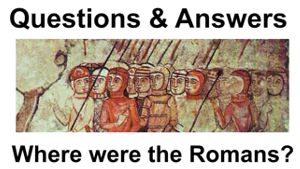

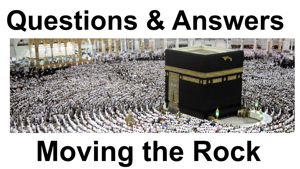
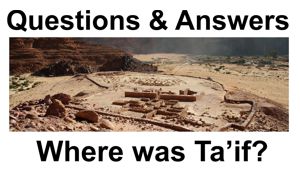
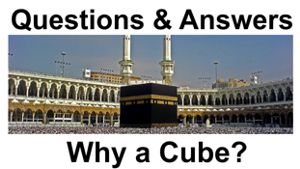

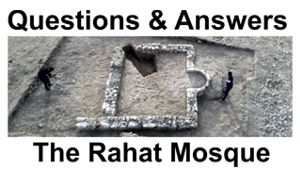
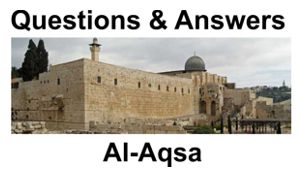
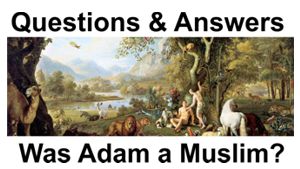
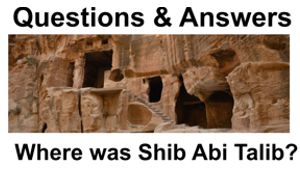



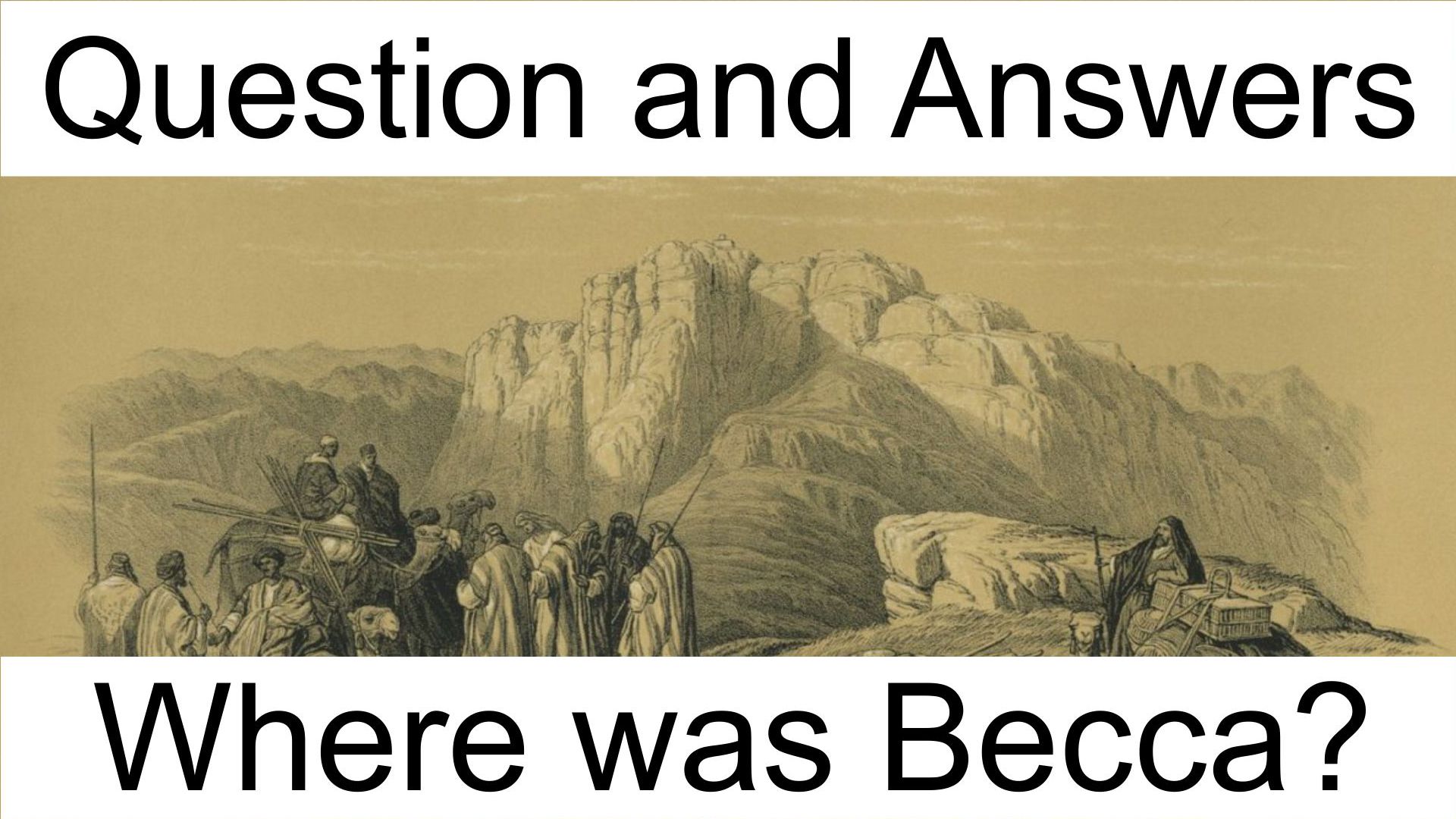

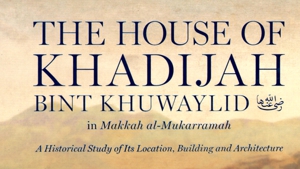

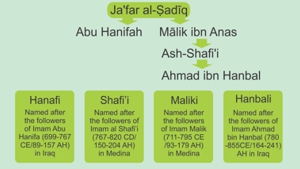

Page Discussion
Membership is required to comment. Membership is free of charge and available to everyone over the age of 16. Just click SignUp, or make a comment below. You will need a user name and a password. The system will automatically send a code to your email address. It should arrive in a few minutes. Enter the code, and you are finished.
Members who post adverts or use inappropriate language or make disrespectful comments will have their membership removed and be barred from the site. By becoming a member you agree to our Terms of Use and our Privacy, Cookies & Ad Policies. Remember that we will never, under any circumstances, sell or give your email address or private information to anyone unless required by law. Please keep your comments on topic. Thanks!